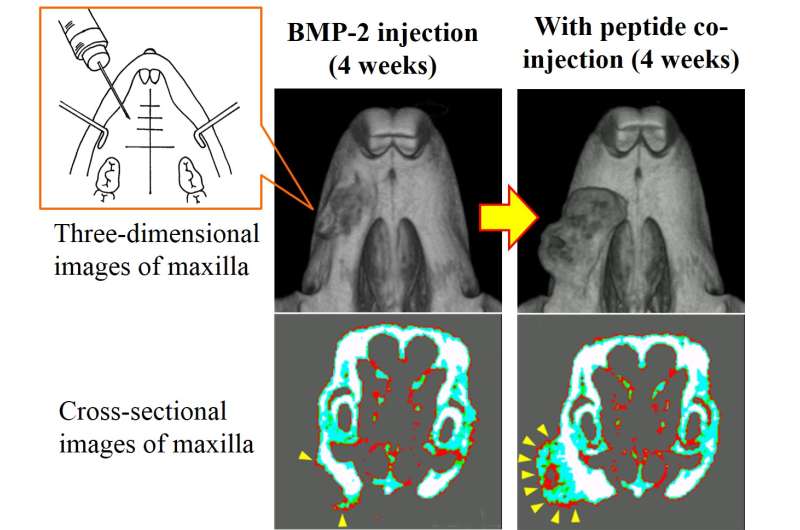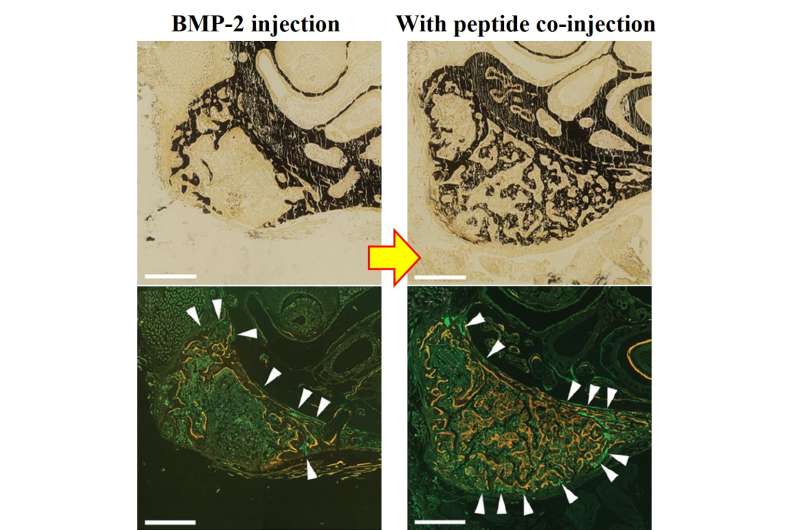Injected mix of bone-augmenting agents causes new bone growth in mouse jaws

The part of the jawbone containing the tooth sockets is known as alveolar bone, and its loss over time or following dental disease may ultimately result in tooth loss. While dentures can be used as a tooth replacement, the mechanical stimuli under the dentures causes further bone loss. Health professionals therefore seek an alternative and more permanent solution. Recombinant human bone morphogenetic protein 2 (BMP-2) has been used to stimulate osteogenesis (bone formation) in humans, but high levels can cause inflammation and tumor development. Therefore, agents such as peptide drugs for accelerating bone augmentation need to be developed, even in the presence of lower levels of BMP-2. Additionally, there are no known means of stimulating local bone augmentation without performing surgery.
The peptide OP3-4 has been shown to inhibit bone decay and stimulate the differentiation of cells (osteoblasts) that form bone. Now, an international team centered at Tokyo Medical and Dental University has injected a gelatin-based gel carrying OP3-4 and BMP-2 into mice jawbones to trigger local augmentation of bone around the injection site. The study was recently reported in the Journal of Dental Research.
Use of this injectable, gelatin-based gel to carry the agents avoids the need for surgical implantation and resulted in no swelling or other such complications in the experimental mice. The researchers observed a region of increased bone mass around the BMP-2 + OP3-4 injection site that was larger than that seen in mice injected with BMP-2 alone, or with other controls. This mass also had a significantly higher bone mineral content and density.

Microscopic examination revealed the deposition of calcified tissue (mineralization) throughout the newly formed bone of BMP-2 + OP3-4-treated mice. "Mineralization of the outer region evidently took place before that of the inner region," says lead author Tomoki Uehara. "We speculate that the size of the new bone is determined before calcification starts, and that OP3-4 plays an important role in making a regeneration site at the early stage of bone formation."
Corresponding author Kazuhiro Aoki adds: "OP3-4 further enhanced the number of bone-forming cells induced by BMP-2 treatment, and greatly increased the expression of genetic markers of bone formation."
More information: T. Uehara et al, Delivery of RANKL-Binding Peptide OP3-4 Promotes BMP-2-Induced Maxillary Bone Regeneration, Journal of Dental Research (2016). DOI: 10.1177/0022034516633170


















